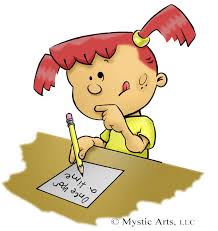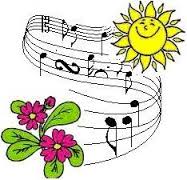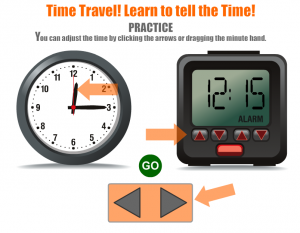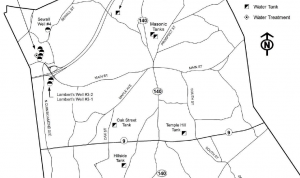Posted by kavery508 | Posted in Uncategorized | Posted on May 11, 2015
 Our reading focus for the next few weeks is on Determining Importance in nonfiction texts. Whether you are a college student reading and writing analyses, a professional researching and applying best practice, or a busy parent catching up on events in newspapers and magazines, all good readers rely on critical thinking skills to get to the heart of the information being presented. For kids, it’s necessary they learn how to figure out what the author was trying to teach, instead of what information they thought was interesting or exciting. We’ve learned to separate important information from interesting details in parts of texts, and how to use nonfiction text features to support that understanding. Now we’re trying to go beyond that and see a text as a whole that includes a main idea (title, subtitle) and supporting details (headings, chapters, subheadings) which explains what the author wants us to take away. The Stoneville Elementary School’s site has a nice summary with some great links. I recommend you check it out when reading nonfiction with your child this year and over the summer! Stoneville Elementary Comprehension
Our reading focus for the next few weeks is on Determining Importance in nonfiction texts. Whether you are a college student reading and writing analyses, a professional researching and applying best practice, or a busy parent catching up on events in newspapers and magazines, all good readers rely on critical thinking skills to get to the heart of the information being presented. For kids, it’s necessary they learn how to figure out what the author was trying to teach, instead of what information they thought was interesting or exciting. We’ve learned to separate important information from interesting details in parts of texts, and how to use nonfiction text features to support that understanding. Now we’re trying to go beyond that and see a text as a whole that includes a main idea (title, subtitle) and supporting details (headings, chapters, subheadings) which explains what the author wants us to take away. The Stoneville Elementary School’s site has a nice summary with some great links. I recommend you check it out when reading nonfiction with your child this year and over the summer! Stoneville Elementary Comprehension
 Another big idea, and one emphasized in the Common Core, is for students to use evidence from texts when presenting an argument (which gets at the heart of writing for college and career readiness in the 21st century). This week, students will write opinion pieces about a favorite story that require them to make an argument in the form of a book recommendation. They will analyze the book in light of its characters, setting, and/or plot elements, and use evidence from it to support their reasons for recommending the book.
Another big idea, and one emphasized in the Common Core, is for students to use evidence from texts when presenting an argument (which gets at the heart of writing for college and career readiness in the 21st century). This week, students will write opinion pieces about a favorite story that require them to make an argument in the form of a book recommendation. They will analyze the book in light of its characters, setting, and/or plot elements, and use evidence from it to support their reasons for recommending the book.
 Our blogs are up and running! As promised, I will send home a link to view them. For added privacy, I will not post it here; rather, it will come home in paper form on Monday. Students have asked if they can log in to their own blogs at home in order to comment on peer’s work or reply to comments. This seems reasonable since our time and technology are limited at school. I have said they may if they remember the guidelines about collaboration and netiquette: 1) Use friendly letter format to greet the blogger, write a closing and sign your name. 2) In a positive way, comment on what the blogger wrote instead of chatting with him/her. 3) When replying to a comment, thank the commenter and write a sentence about the topic, including answers to any questions posed by the commenter. 4) English matters! Check for upper/lowercases, punctuation, grammar, and spelling before submitting. Bear in mind if perusing other student blogs that this is a new endeavor and the quality of our comments is a work in progress!
Our blogs are up and running! As promised, I will send home a link to view them. For added privacy, I will not post it here; rather, it will come home in paper form on Monday. Students have asked if they can log in to their own blogs at home in order to comment on peer’s work or reply to comments. This seems reasonable since our time and technology are limited at school. I have said they may if they remember the guidelines about collaboration and netiquette: 1) Use friendly letter format to greet the blogger, write a closing and sign your name. 2) In a positive way, comment on what the blogger wrote instead of chatting with him/her. 3) When replying to a comment, thank the commenter and write a sentence about the topic, including answers to any questions posed by the commenter. 4) English matters! Check for upper/lowercases, punctuation, grammar, and spelling before submitting. Bear in mind if perusing other student blogs that this is a new endeavor and the quality of our comments is a work in progress!
 As the year winds down, our math work with MIF focuses on specific skills like money, time, graphing, and fractions. We have ended our money unit, and students should be able to identify coins/bills and their values; calculate and compare combinations of the same; write money amounts with words; and use money to solve real world problems. This week we begin Chapter 14, which teaches kids to tell time to the 5 minutes on an analog clock; write the time in numbers or words; correctly identify AM and PM; and solve problems involving elapsed time (minutes or hours later/before). Please check in with your child at homework time to see if they are retaining the skillwork taught in class, and prompting them to fix errors. As always, the MIF Student Book (eBook B) from the Think Central site offers you an easy to follow look at how the concepts are being taught, and they can be used to clear up confusions with students at home as well! Here is a link to a great online clock from ABCya.com that kids can manipulate to read the time in analog and digital format, and to use it to play games. Try it out! http://www.abcya.com/telling_time.htm
As the year winds down, our math work with MIF focuses on specific skills like money, time, graphing, and fractions. We have ended our money unit, and students should be able to identify coins/bills and their values; calculate and compare combinations of the same; write money amounts with words; and use money to solve real world problems. This week we begin Chapter 14, which teaches kids to tell time to the 5 minutes on an analog clock; write the time in numbers or words; correctly identify AM and PM; and solve problems involving elapsed time (minutes or hours later/before). Please check in with your child at homework time to see if they are retaining the skillwork taught in class, and prompting them to fix errors. As always, the MIF Student Book (eBook B) from the Think Central site offers you an easy to follow look at how the concepts are being taught, and they can be used to clear up confusions with students at home as well! Here is a link to a great online clock from ABCya.com that kids can manipulate to read the time in analog and digital format, and to use it to play games. Try it out! http://www.abcya.com/telling_time.htm
Our science focus over the next few weeks is all about water. This week, students will learn how precious a commodity it is on earth (just 1% of ALL water on earth is potable). They will also learn how it used inside and outside our school and begin to understand its importance in our daily lives. In addition, we will learn how Shrewsbury gets its water, from aquifers to wells. Check out the map below, taken from the Town of Shrewsbury.gov website. It reveals the location of 6 water tanks throughout town. Think of it as a treasure map, and drive/hike to find them all with your child! For bonus points, take pictures standing in front of each one, print them out, and send them in to school, where we will display them! For a larger version of the map, see the original at: http://www.shrewsbury-ma.gov/egov/docs/1406295054_794006.pdf
 You’re invited! Our End-of-Year Celebration will be held Friday, June 12, 9:30-10:15 in our Cafeteria. Similar to our Winter bash, we will be performing on the stage for family and friends, and we will remain after for photo opportunities and congratulations!
You’re invited! Our End-of-Year Celebration will be held Friday, June 12, 9:30-10:15 in our Cafeteria. Similar to our Winter bash, we will be performing on the stage for family and friends, and we will remain after for photo opportunities and congratulations!



